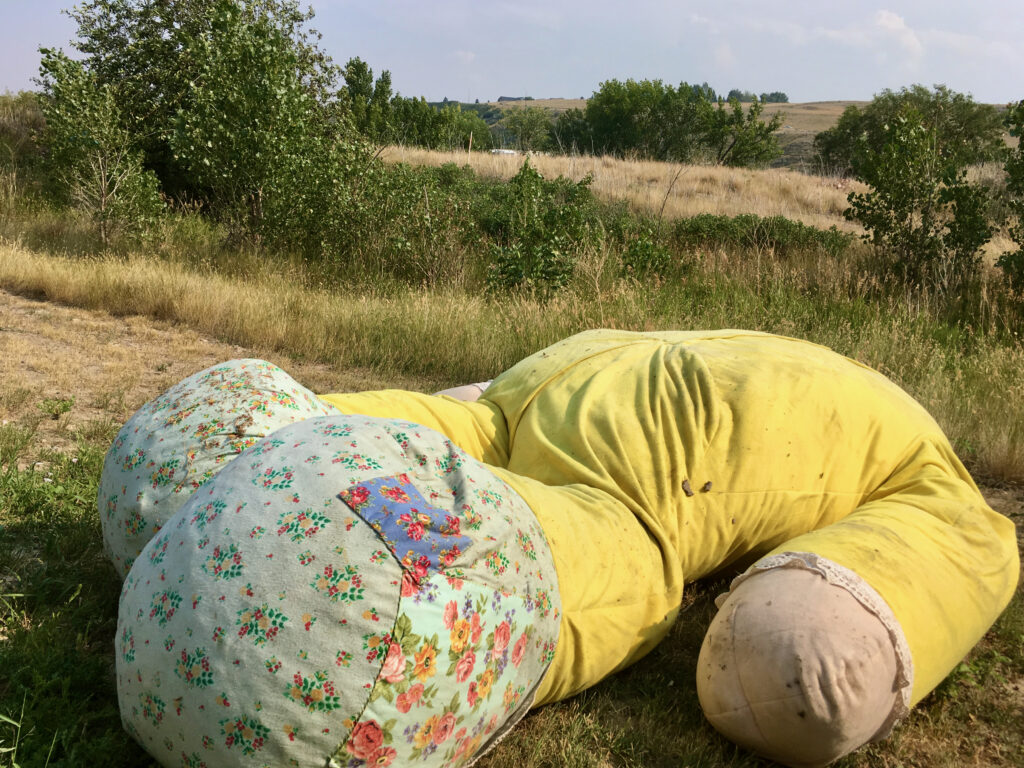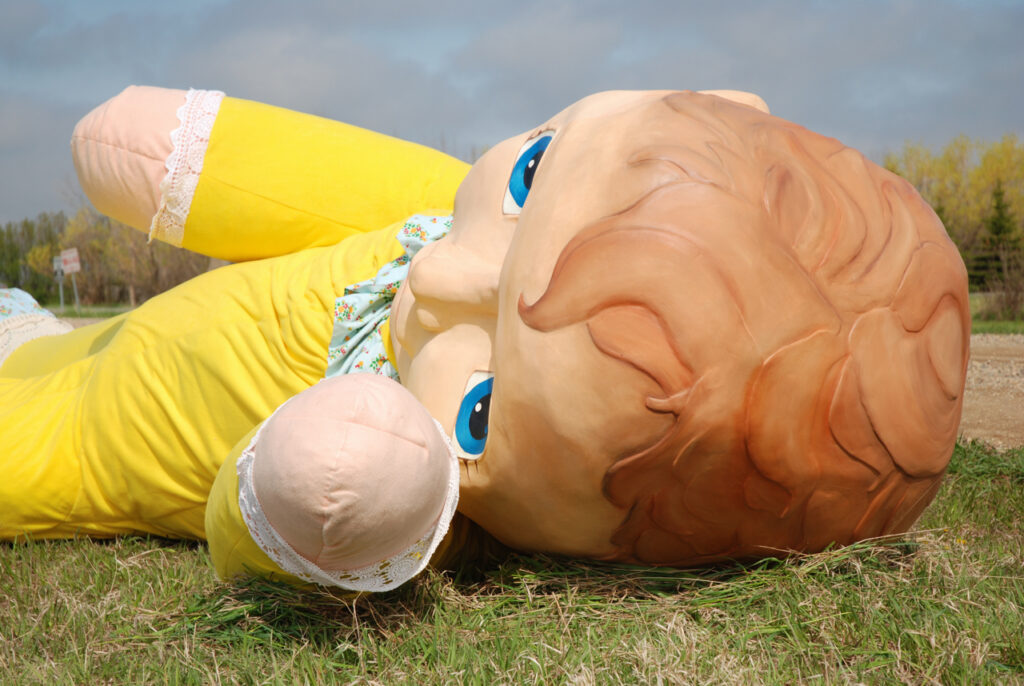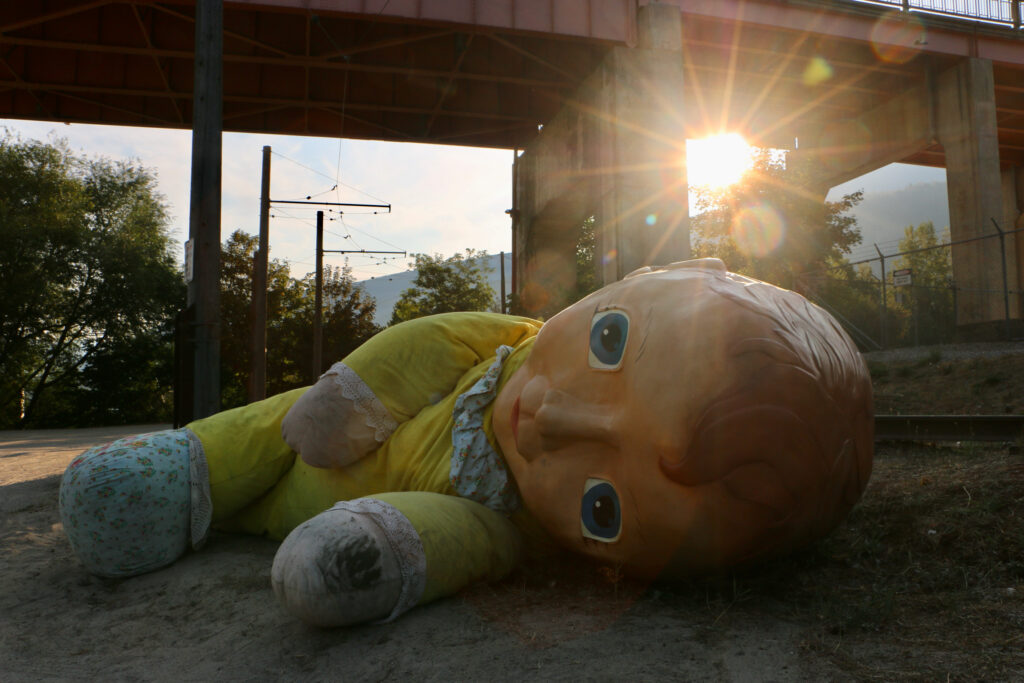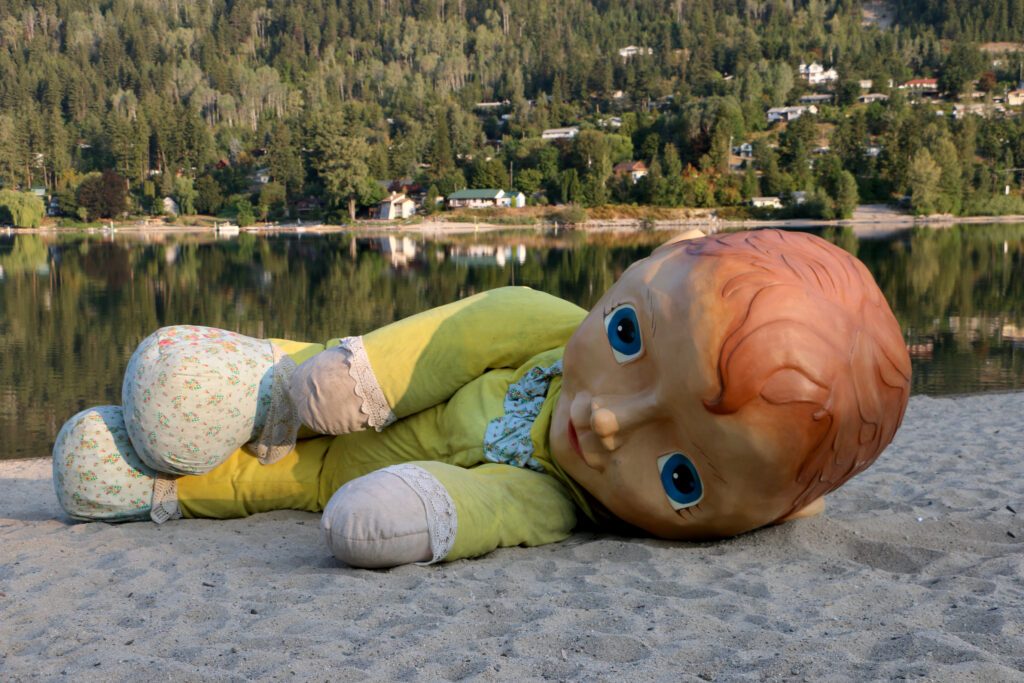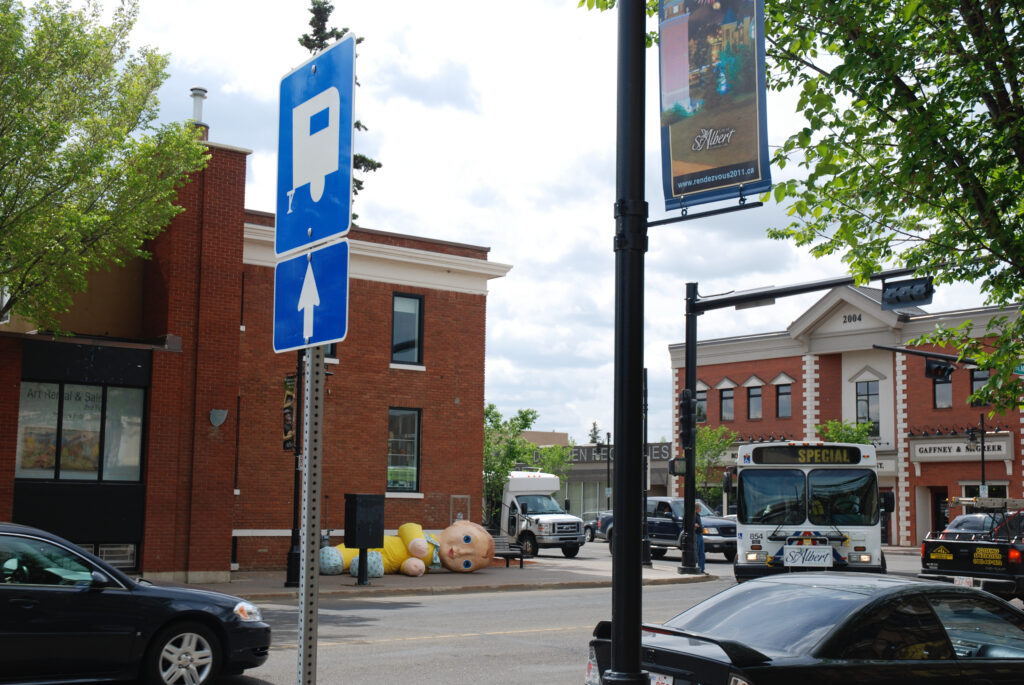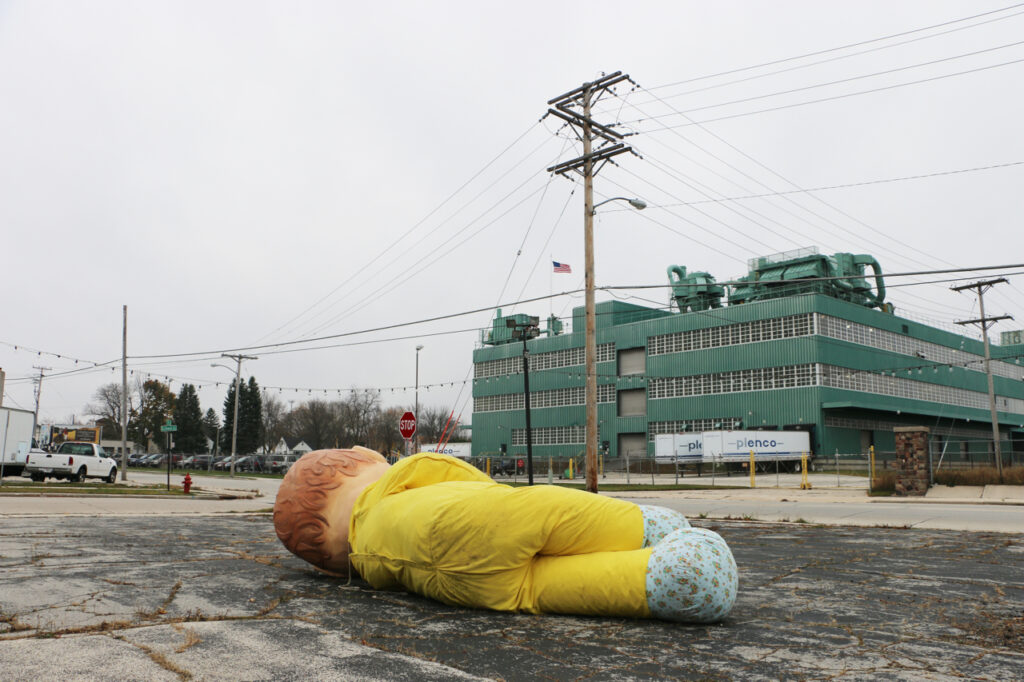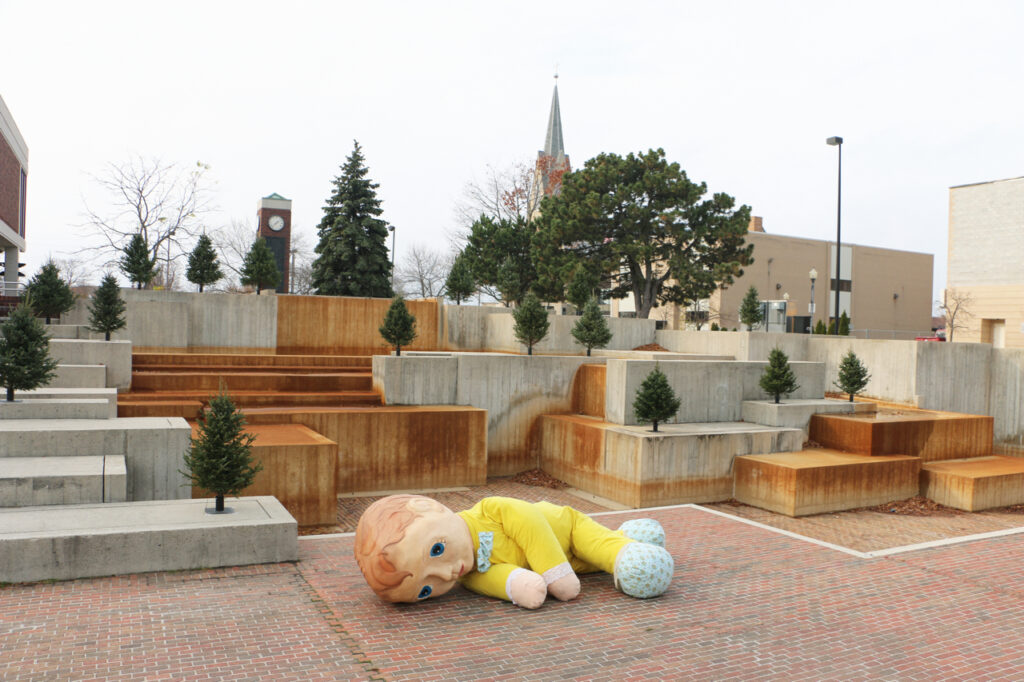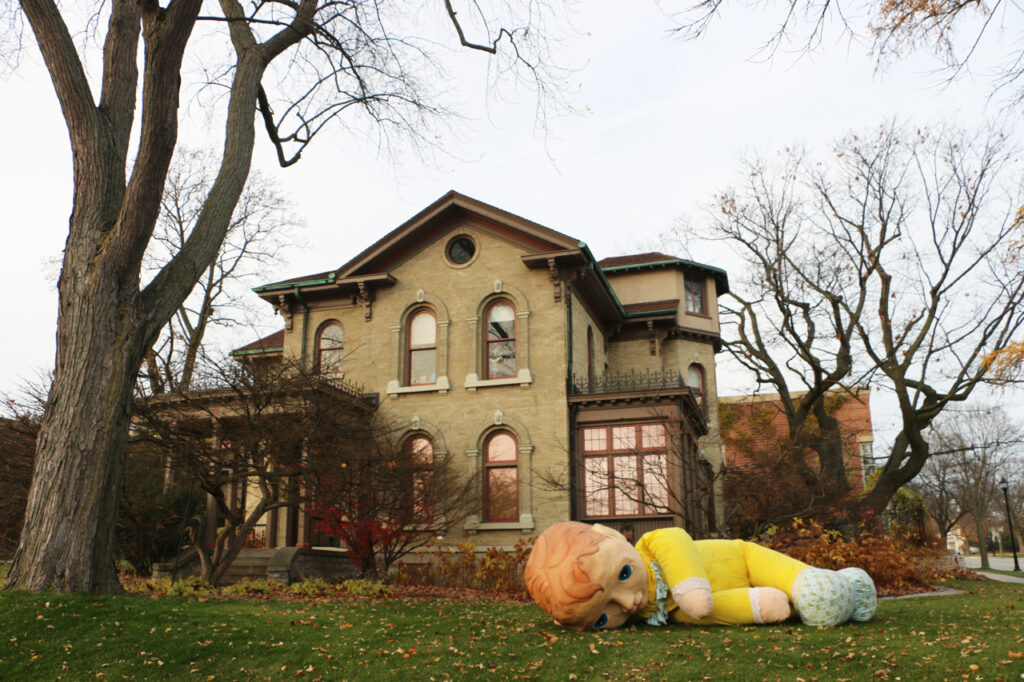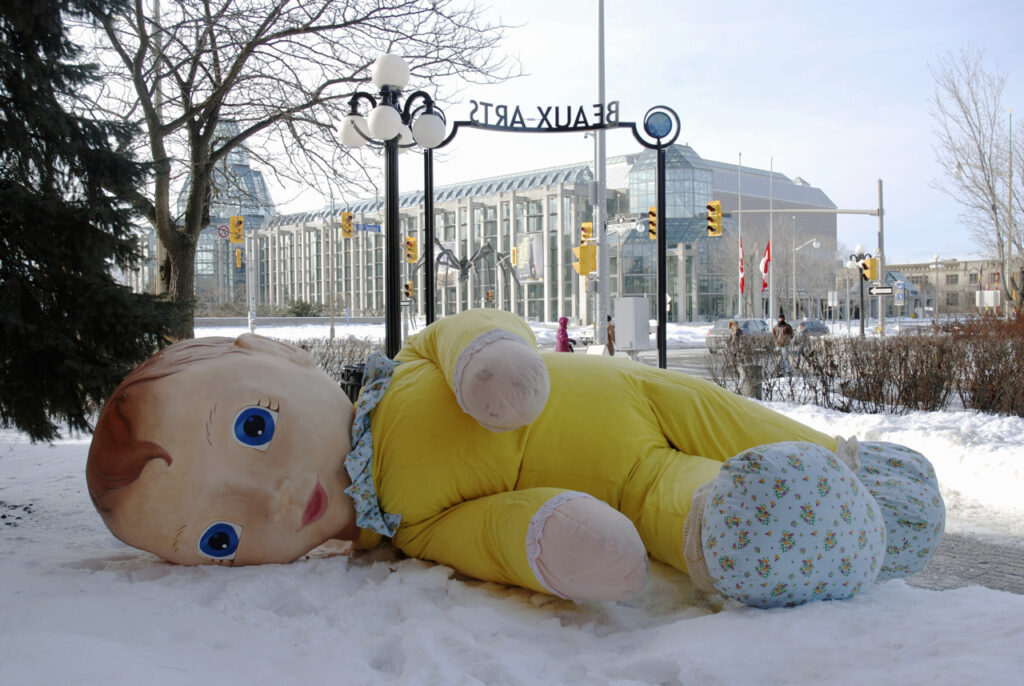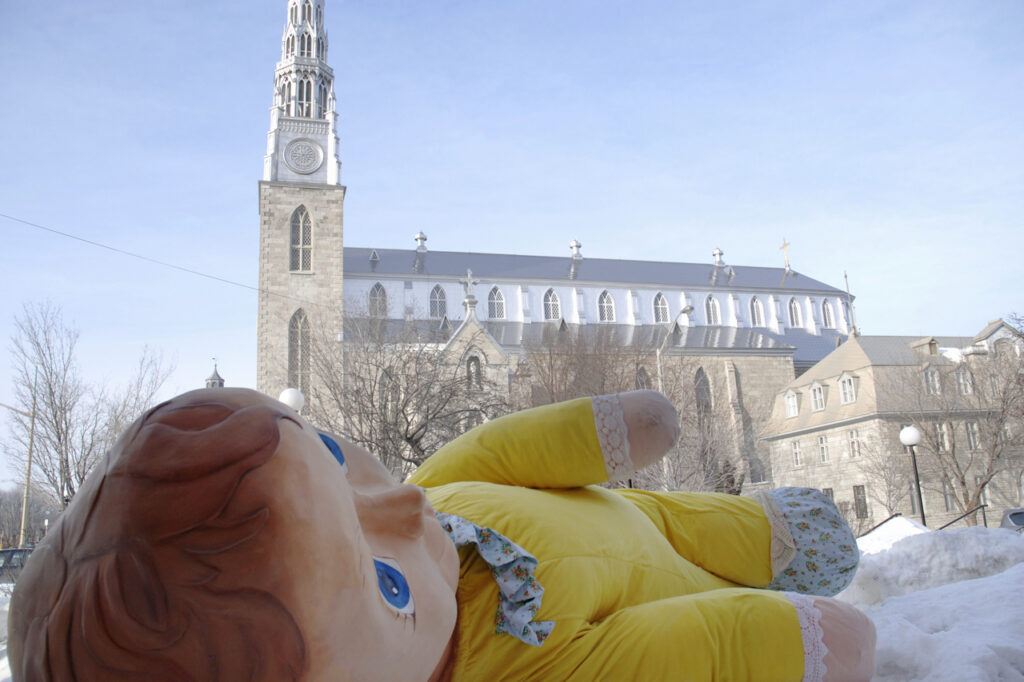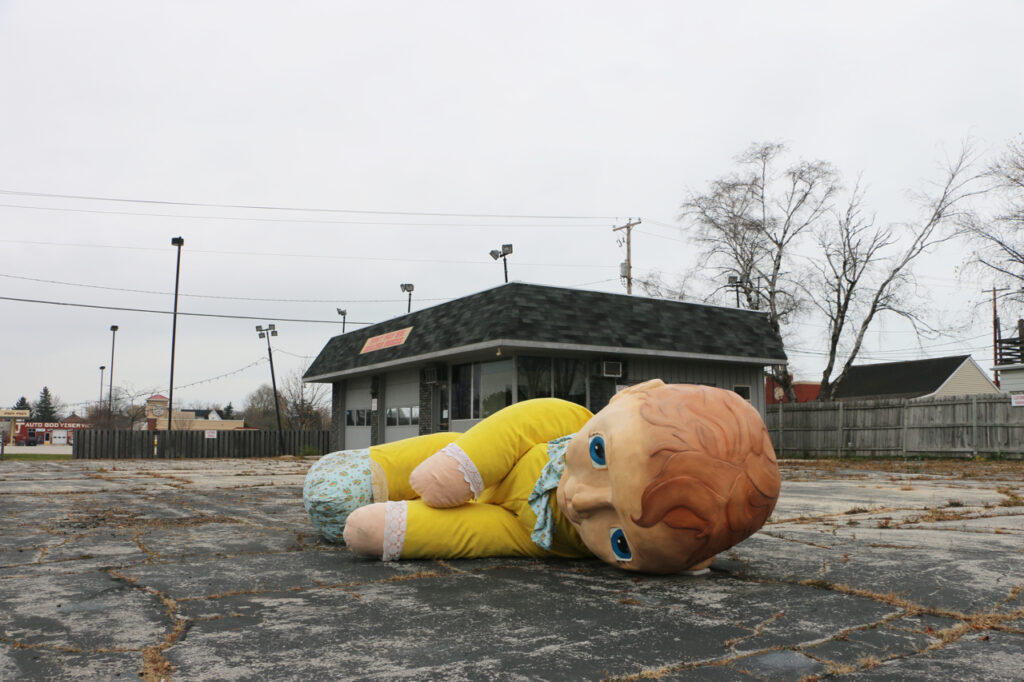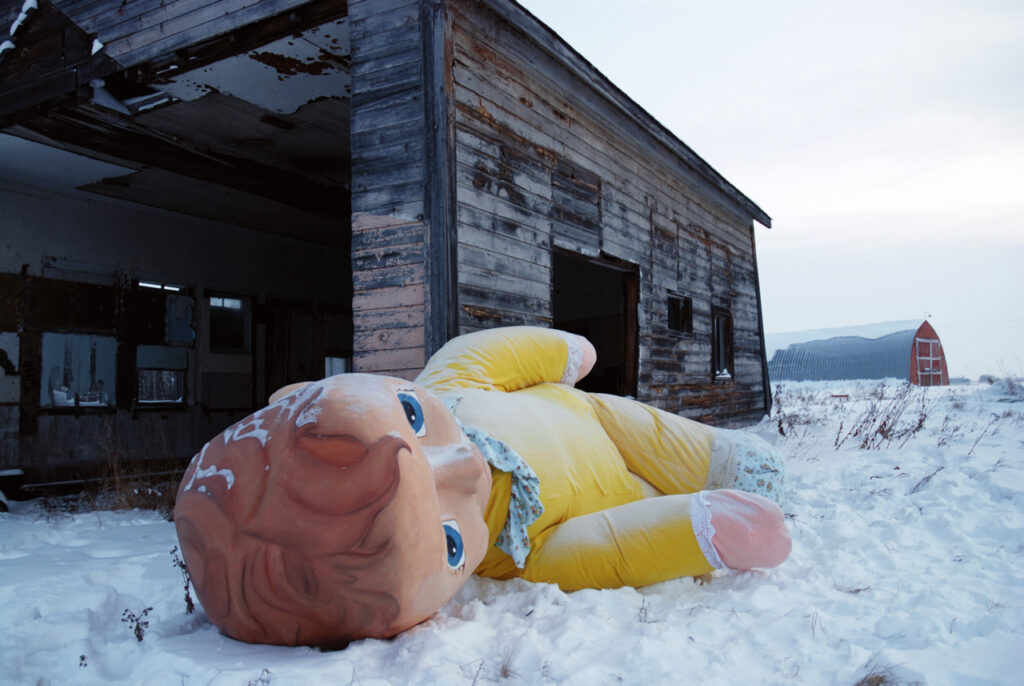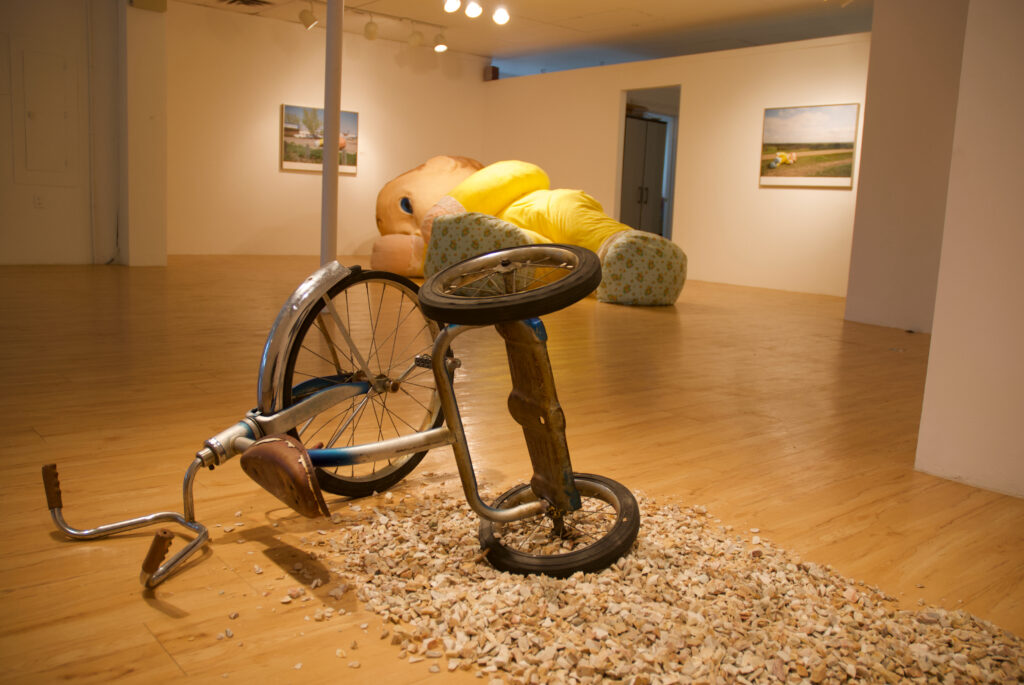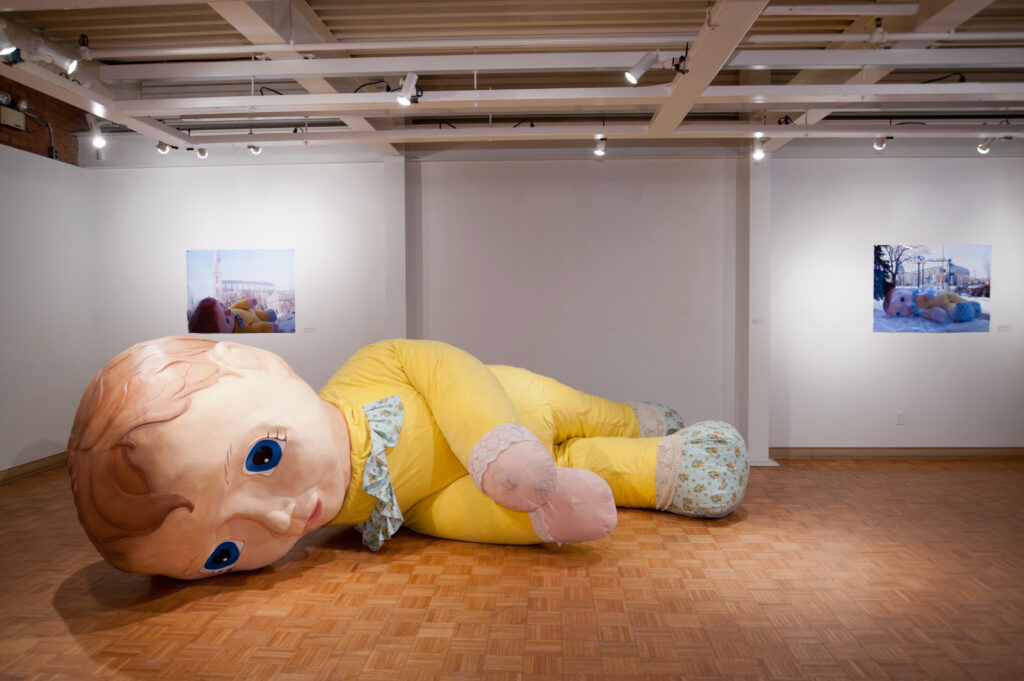field doll
field doll
Heather Benning’s art practice involves an interrogation of our relationship with place in an age of increasing mobility. The ever-increasing trend towards globalism and migration impacts our relationships, our ideas of self, and our engagement with the world. Heather Benning’s Field Doll features a 16-foot long sculpture of a child’s doll, modeled on a doll that has accompanied Heather in her own travels. Field Doll grapples with themes of loss and abandonment as the inevitable outcomes of progress. The work in this exhibition frames these themes through a child’s perspective.
The giant doll, like an anchor in a sea of change, embodies a source of security in the face of loss, displacement, and apprehension toward an unknown future. The exhibition also includes a series of photographs of the oversize doll laying abandoned in various locations; in a snow covered farm yard, along an empty roadside, in a forlorn parking lot, and in the to-and-fro of a bustling downtown. These landscapes and cityscapes suggest that the massive doll has repeatedly found itself, as Benning describes, “in the wrong place”.[1] The “wrong place” concept implies that the doll’s home, its “right place,” is elsewhere. Field Doll’s abandonment is magnified by her gargantuan scale. Are we to imagine that the doll’s home was in that empty farm yard? Is this child’s toy resting in the gallery, another “wrong place,” as a stop-over in a journey home? The movement of the doll from place to place links the sculpture to Benning’s biography–from her childhood spent moving about rural Saskatchewan to her career as a visual artist, which also has taken her from one place to another.
Art historian, Miwon Kwon suggests that in the art world “the success and viability of one’s work are now measured by the accumulation of frequent flyer miles”, she continues on to say, “The more we give into the logic of nomadism, one could say, the more we are made to feel wanted, needed, validated, and relevant.”[2] So it is that the more one inhabits the wrong places–airports, hotels, international art biennales, and conference centres–the more destabilized one’s sense of belonging to the right places becomes.
Progress and its casualties are further implied by the third element of the exhibition, Where did all the Good Stones Go, a kinetic sculpture of a tricycle tipped on its side with one wheel spinning, as if blown by the wind. The feeling of a sudden disappearance, abduction, or an ominous event that is so palpable in this work is echoed throughout this uncanny exhibition. Benning’s work leads the viewer to cross between the psychological underpinnings of a child’s delights, hopes, and fears and the social implications of globalism, in particular, the emptying out of Canada’s rural communities. The child that was… the home that was… the farm that was… and the prairie that was… all haunt this exhibition.
~ Jeff Nye
[1] Heather Benning, KNOW where you’re going? KNOW where you’re from… (self-published statement, 2008), 16.
[2] Miwon Kwon, One Place After Another: Site Specific Art and Locational Identity, 1st paperback ed.
(Cambridge and London: The MIT Press, 2004), 156.
Copyright 2024 Heather Benning. All artwork and content (images and text) on the Heather Benning website are the sole property and copyright of Heather Benning and are protected by copyright laws.
